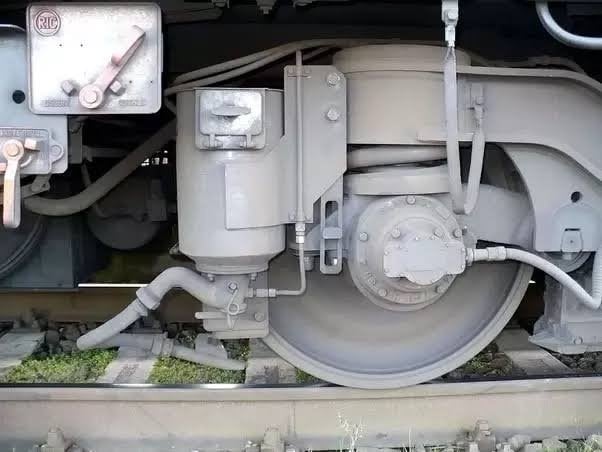Most of the critical safety systems in a light rail vehicle are probably obvious. Probably at the top of the list are brakes. Another obvious system that keeps people safe is bumpers. Some systems, however, are more difficult to guess. But did you ever wonder why trains had sandboxes?
Sandboxes on trains dispense sand directly in front of the drive wheels to provide traction on steep or slippery rails.
What is the Purpose of Sandboxes in Trains?
Sand can be transported by gravity, steam-blast or steam locomotives, or compressed air. Gravity sanding necessitates that the sand is dry enough to flow freely. Because locomotives use multiple sandboxes, their delivery pipes can be very short and nearly vertical.
Sand drying stoves were installed in engine sheds in the United Kingdom so sandboxes could be refilled with dry sand each morning. In the United States, steam locomotives had a single sandbox atop the boiler, called a sand dome, where the rising heat helped to dry the sand. Even with this arrangement, sand pipes tended to clog, and the 1880s proposed pneumatic sanding systems. (Source: Ard Media)
The Steam Sanding Technology
The advancement of steam sanding had an impact on locomotive design. Because the sand could now be blown horizontally and directly under the wheels, it no longer had to be blown away by crosswinds before it could be effective, this rekindled interest in some older single-driver locomotive designs that had previously been hampered by poor adhesion performance.
Johnson designed his successful Spinners of 1887, twenty-one years after the last Singles, in response to the development of Holt’s steam sanding gear on the Midland Railway in 1886. These modern Singles’ would be produced on several British railways for the next sixteen years, including the Great Eastern, Great Western, Great Central, and Great Northern, as well as a famous single example, number 123 on the Caledonian Railway, which remained in main-line service until 1935.
Sandboxes are installed near the wheels of diesel and electric locomotives and railcars to achieve the shortest possible length of the delivery pipe. Sand drier may be installed in a depot to warm and dry the sand before it is used. (Source: Ard Media)
What are the Dangers of Sandboxes on Trains?
Braking sand scattered at a low speed can cause an isolating effect between the wheel and the rail in the case of individually driven traction vehicles. In Germany, the Federal Railway Authority ordered railway companies to avoid sanding at speeds of 25 km/h or less on disc-braked locomotives.
The ARD magazine Report reported on 20 August 2013 that brake sand interfered with the electrical contact between wheel and rail, overriding train control systems. As a result, sanding for braking locomotives is prohibited by the Swiss Federal Railways.
On August 1, 2013, a near-collision occurred between two S-Bahn trains at Mainz Main Station. The Federal Railway Authority announced on September 24, 2013, that the cause was too much brake sand on the tracks.
Too much sand can cause problems, especially at track points or level crossings where the sand cannot slip sideways. Finally, the sand increases friction between the rail and the wheel flange, which reduces wheel flange lubrication; decreased wheel flange lubrication increases the danger of the wheels climbing up the rail. (Source: Ard Media)
Image from Quora
